These photos show how a major river and key freight route is drying up, causing a headache for European shipping firms
Stephen Jones

The Rhine passes through the German town of Kaub.Associated Press
- The Rhine, a major European shipping route, has been drying up, following a heatwave.
- Water levels dropped to around 12 inches at its bottleneck, affecting freight firms and their cargo.
The water levels of the Rhine, one of Europe's largest rivers and major trade routes, have dropped, following a recent heatwave.
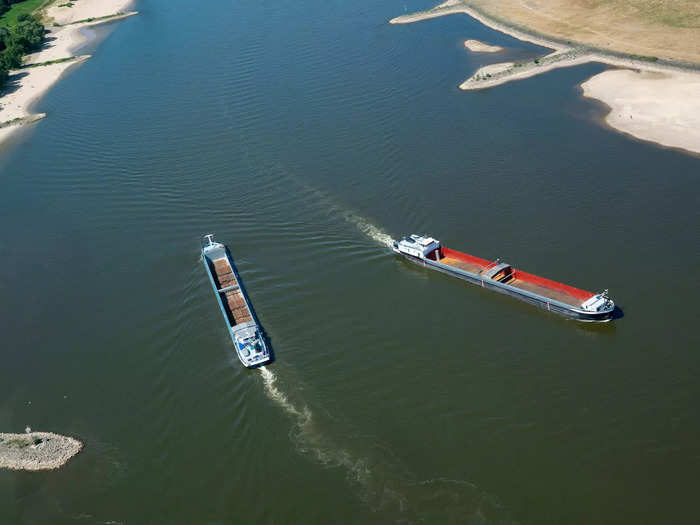
The Rhine is a major shipping route through Europe. Associated Press
On Monday, the Rhine's water level in the German town of Kaub, the river's bottleneck, fell to around 12 inches deep, according to the Rhine Waterways and Shipping Authority, which manages the river. This is the lowest it's been at this time of year since 1990. It had risen to around 13 inches by Wednesday.
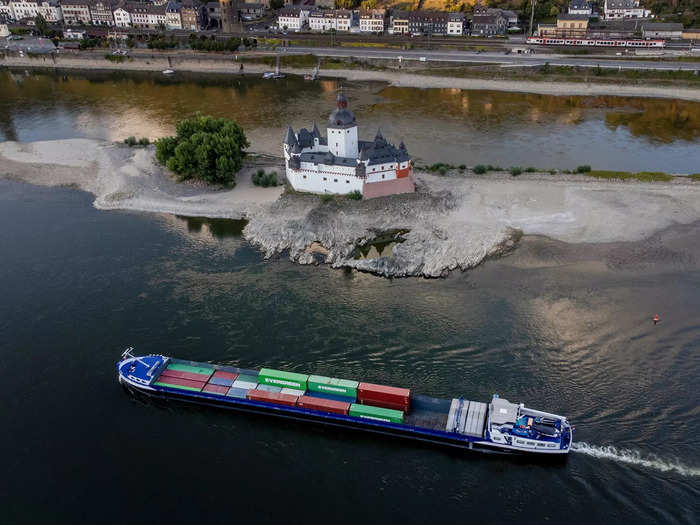
The Rhine passes through the German town of Kaub. Associated Press
The 800-mile-long Rhine connects Germany's industrial heartland, the Ruhr, to major container ports like Rotterdam in the Netherlands. Millions of tonnes of fuel and cargo pass along the river each year.
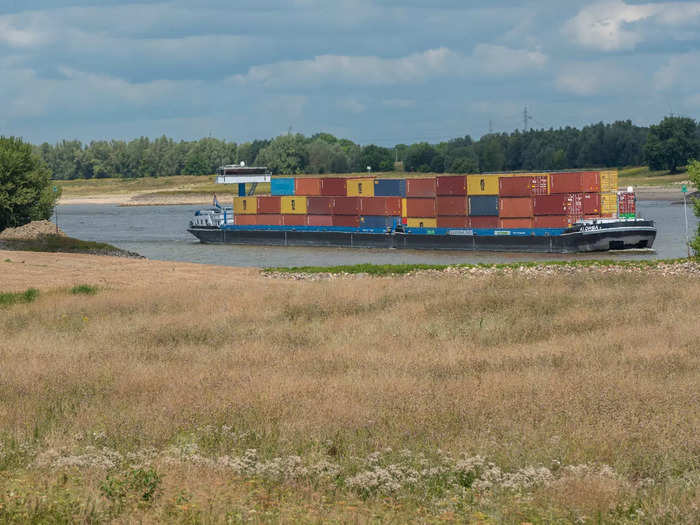
Associated Press
Source: Bloomberg
In July, the water level at Kaub was just under 28 inches, according to government data.
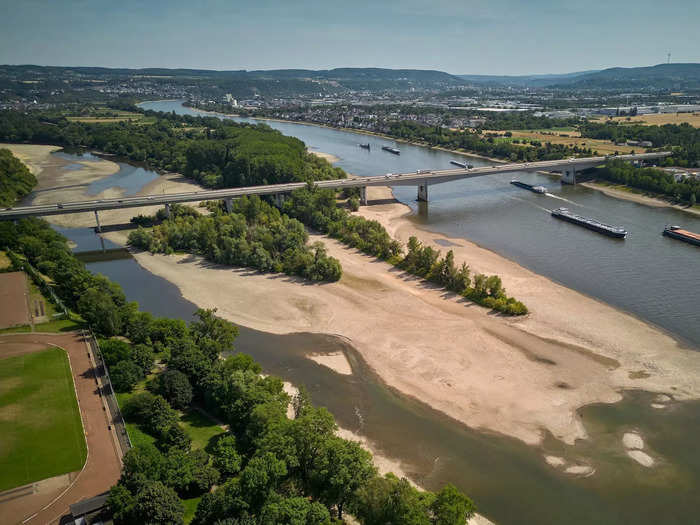
Cargo ships pass a sandbank near Bendorf on the Rhine, on July 18, 2022. Picture alliance / Contributor / Getty Images
"The larger the ship, the less it can carry — relatively speaking," Leny van Toorenburg, the head of nautical technical affairs for the shipping-industry group KBN, told Politico on August 7. When water levels drop to 18 inches, a large ship, which would usually carry around 6,000 tons, has to reduce its load to around 800 tons, van Toorenburg said.
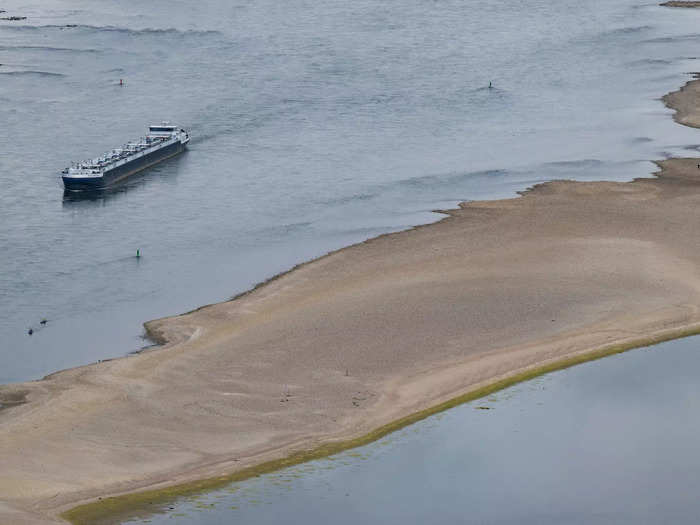
picture alliance / Contributor / Getty
Source: Politico
To keep operating, firms have to reduce the amount of cargo they can carry per barge or rely on trucks or trains to move goods, increasing the cost and restricting the supply of goods.
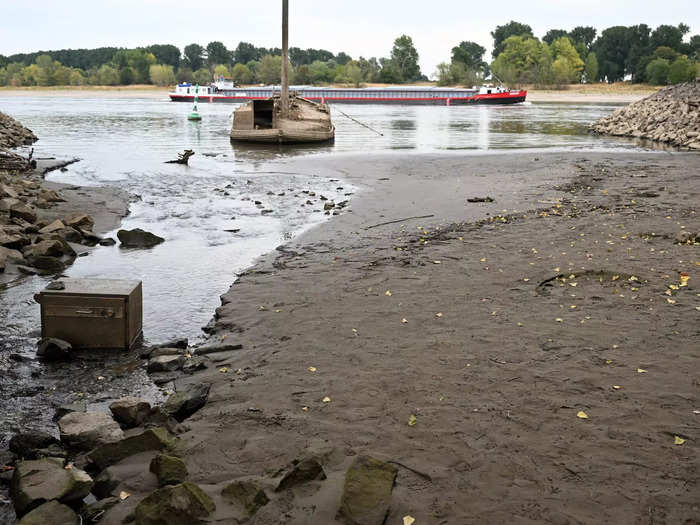
picture alliance / Contributor
Source: Bloomberg
Some ships were setting sail with a quarter of their regular cargo as a result of the drop, Reuters reported.
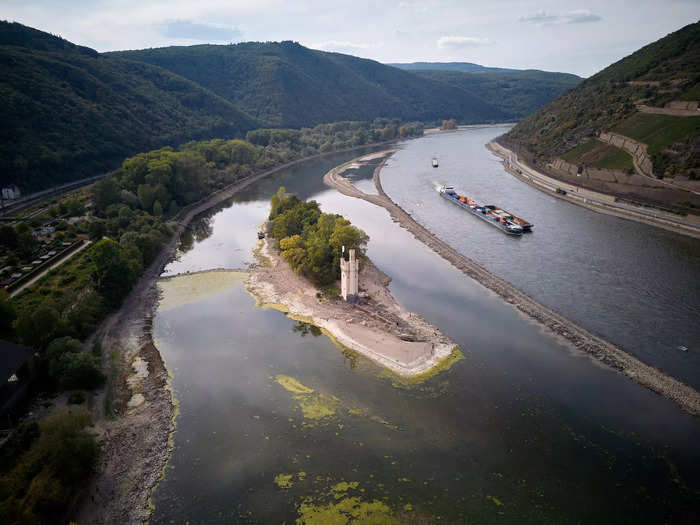
picture alliance / Contributor / Getty
Source: Reuters
The chemical company BASF, which has a facility on the river in Germany, has ordered barges that are better suited to operate in lower water levels, Bloomberg reported.
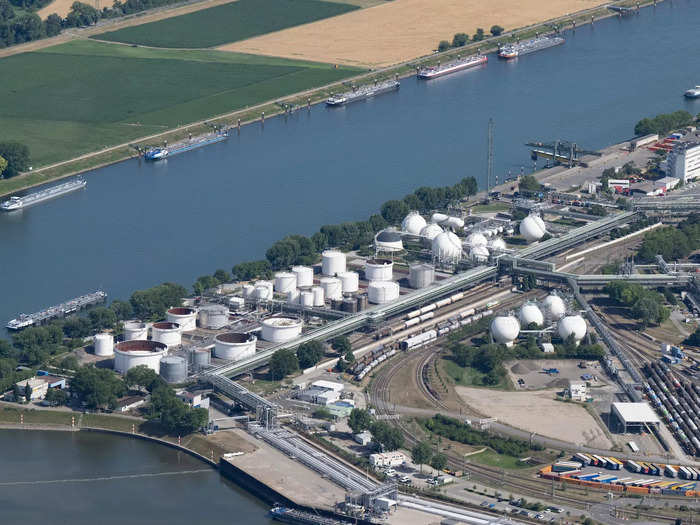
BASF's industrial facilities in Ludwigshafen, in July 2022. picture alliance / Contributor / Getty
Source: Bloomberg, Stolt-Nielsen
The steelmaker ThyssenKrupp AG is using barges with flatter hulls and has established a daily crisis team to monitor the situation, per Bloomberg.
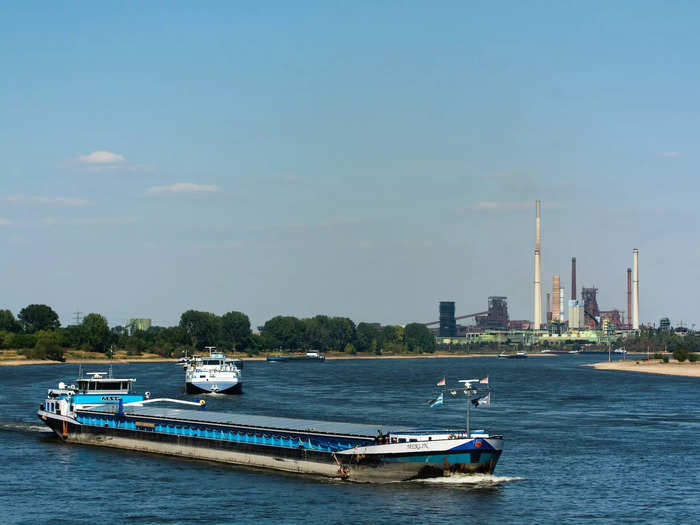
Barges on the river in front of the Thyssenkrupp steelworks, Duisburg Germany. NurPhoto / Contributor / Getty
Source: Bloomberg
The lower water levels are a problem for Germany's economy as it makes it harder to move key resources like coal and liquefied natural gas from the ports to its industrial firms.
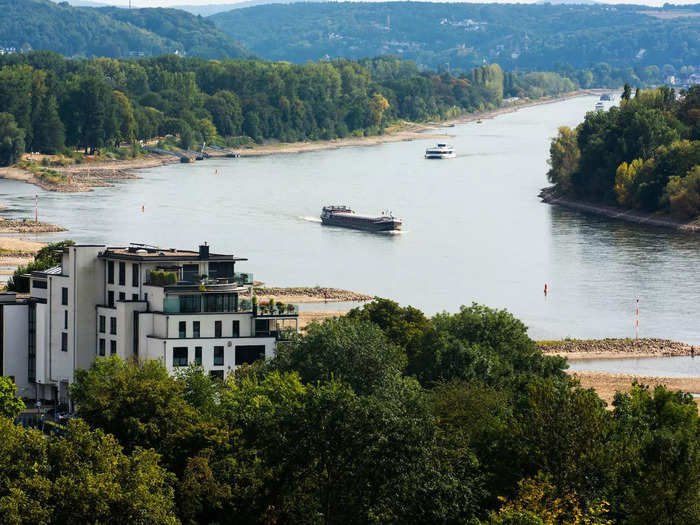
NurPhoto / Contributor / Getty Images
In an August 11 report, the investment bank Liberum estimated that if levels remain low for a sustained period of three weeks, it could cut German industrial production by one percentage point."Germany is an economic powerhouse for the region. So if it struggles, everyone struggles," Tom Price, a commodities analyst at Liberum, told Insider.

Cologne, Germany, on August 10, 2022. Associated Press
Any bottleneck is also going to have knock-on effects for the entire global supply chain, George Griffiths, a container-market expert at S&P Global Insights, told Insider."All this is doing is serving to amplify some of the logistical problems that we've already got in the market."
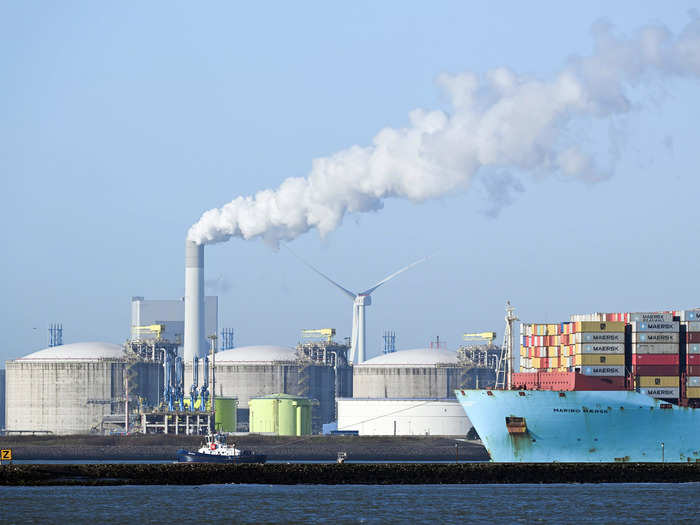
LNG import terminal in Rotterdam. Federico Gambarini/Picture Alliance/Getty Images
Even if the water levels return to normal over the next couple of days, there's already a shipping backlog at both ends of the Rhine, Griffiths said. Supply chains are so delicately balanced that even a disruption of a day or two could have a significant impact, he added.

Tihama, a Maltese Flag container ship, in Rotterdam harbour on August 13, 2022. Thierry Monasse / Contributor / Getty
On August 14, the German government introduced a decree that prioritized the transportation of coal, mineral oils, and other cargo deemed essential for energy production by rail, Reuters reported.
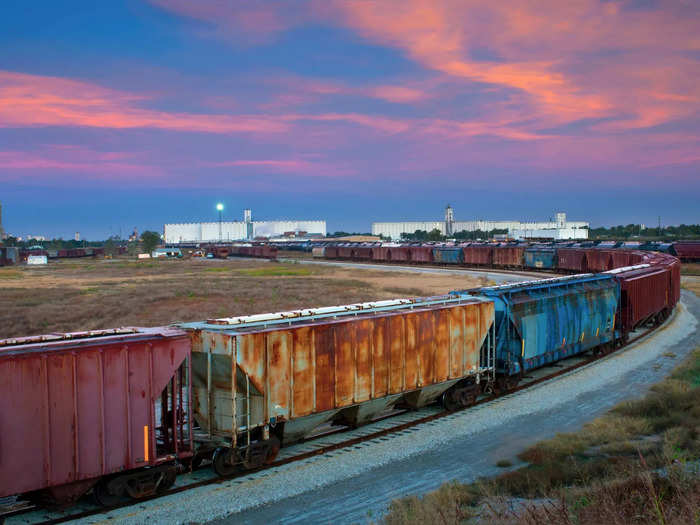
Freight trains haul goods. Getty
Source: Reuters
The Federal Waterways and Shipping Administration anticipates that water levels should start to stabilize and could climb to around 16 inches by Saturday morning. The water levels at Kaub need to be around 59 inches and above for barges to pass through at full capacity, according to the Rhine Forecast.
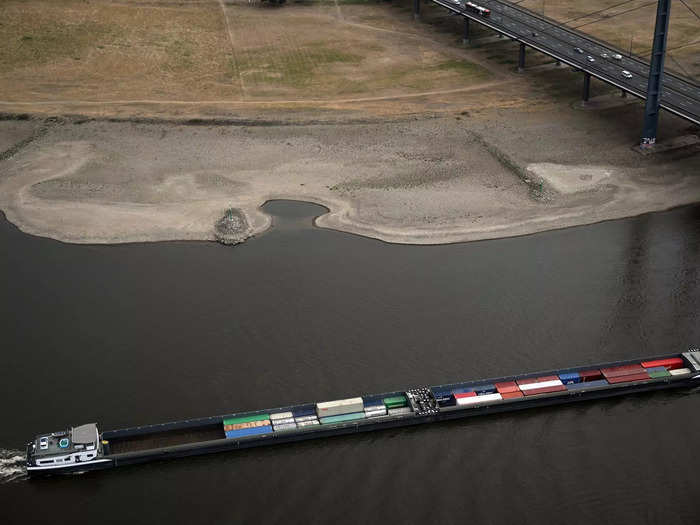
picture alliance / Contributor / Getty
Source: WSV, Rhine Forecast, Reuters
It's not the first time the Rhine has started drying up. The waterway was temporarily closed for four months in October 2018 when water levels fell to around 10 inches in some places.
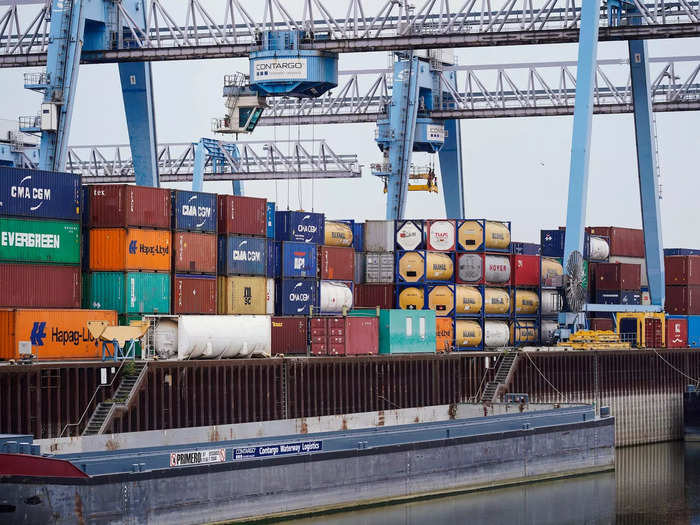
picture alliance / Contributor / Getty
Popular Right Now
Popular Keywords
Advertisement